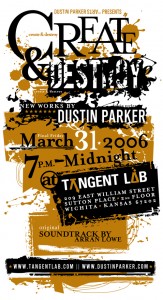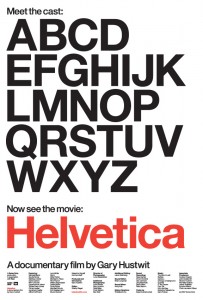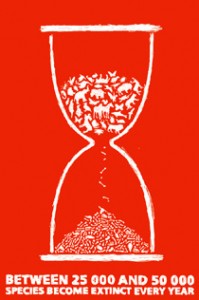Evolution of type design and the quest for Christian truth
I used to worry about what was true. Now I spend more time trying to figure out what truth is.
At this stage of the game I find if I strongly disagree with someone, especially on theological matters, is often isn’t because we have come to different conclusions, but rather because we are asking different questions.
This tension has been made all the more clear as I have wandered into the world of post-modern epistemology (if there is such a thing). Many of my close friends fear that doing so has driven me to a place where any concept of truth is discarded; yet for me, I have made no judgments on truth itself, only on our own ability to comprehend truth.
So what does this have to do with type design?
The other day I watched a 1.5 hour documentary about the Helvetica typeface. Despite the seemingly mundane subject manner, the movie was quite interesting as it followed the rise of this Swiss font from the 1950’s to its ubiquitous status as the work horse of graphic design in the modernistic era. You see Helvitca is an extremely “clean” font that supposedly could be used to convey pure meaning without getting in the way. Rather than using hype and idealism, modernistic design (and the Helvetica font) could simply tell things as they were.
To put it visually, just look at these two coke ads:
For a while people soaked up this simple, direct style where everything had its place. But eventually people began to realize that not everything in life fits into clear categories–in fact, life is hectic and chaotic and to ignore these aspects is not to be authentic. This led to post-modernism where all the rules were thrown out and meaning was understood to be more in the experience than the text itself. Unfortunately this way of thinking (and designing) eventually spiraled downward into a subjective mess of jumbled words and ideas.

Postmodern poster design with multiple fonts, jumbled information and chatoic layout. Credit: Dustin Parker
In this way modernism was a response to the idealism of the 1950’s and then postmodern design emerged in contrast to the orderliness of modernism. While each stage developed as a way to be “more authentic” in the end, each failed because it refused to take in the whole picture. Life is not perfect, life is not always orderly, but at the end of the day it is not complete chaos either.
I have found many approaches to Christianity mimic these stages of design. Some people preach a Christianity where once you are “saved” all your problems go away. This is just n0t true and breaks down under the smallest amount of scrutinizing. Some people think that Christianity is very clear cut and if you study Scripture close enough, you will be able to categorize all things into right and wrong / black and white / in and out. This too is niave as it fails to take into account the complexities of the world and the ambiguity of scripture. Finally, some people approach Christianity in their own way and refuse to acknowledge the coherence and direction it does provide. These people are willing to throw the baby out with the bathwater leaving a religion stripped of its power and uniqueness.
In design, the best pieces are those that can open a window to a better world, clearly convey information and emotion, and at the end of the day, strike a personal chord that is rooted in authenticity.
Our approach to Christianity needs to be similar. We need to believe the faith we follow is moving us to a better place, yet acknowledge the pain and suffering of this current world. In fact, the vision we have of the ways things can be is what should drive us to make it so. When it comes to scripture and truth, we need to trust in the power of the narrative of scripture, yet also be willing to acknowledge its short comings and the holes in our own understanding of it.
I believe scripture does paint a clear picture of what it means to be the people of God and participate in the will of God. At the same time, am not willing to assert simply believing in God will solve all the world’s ills, nor am I confident in saying we can distill pure truth from the Word of God. Instead, I think Christianity is messy, yet follows a clear direction. I don’t have all the specifics, but I feel I am wandering the right way.



